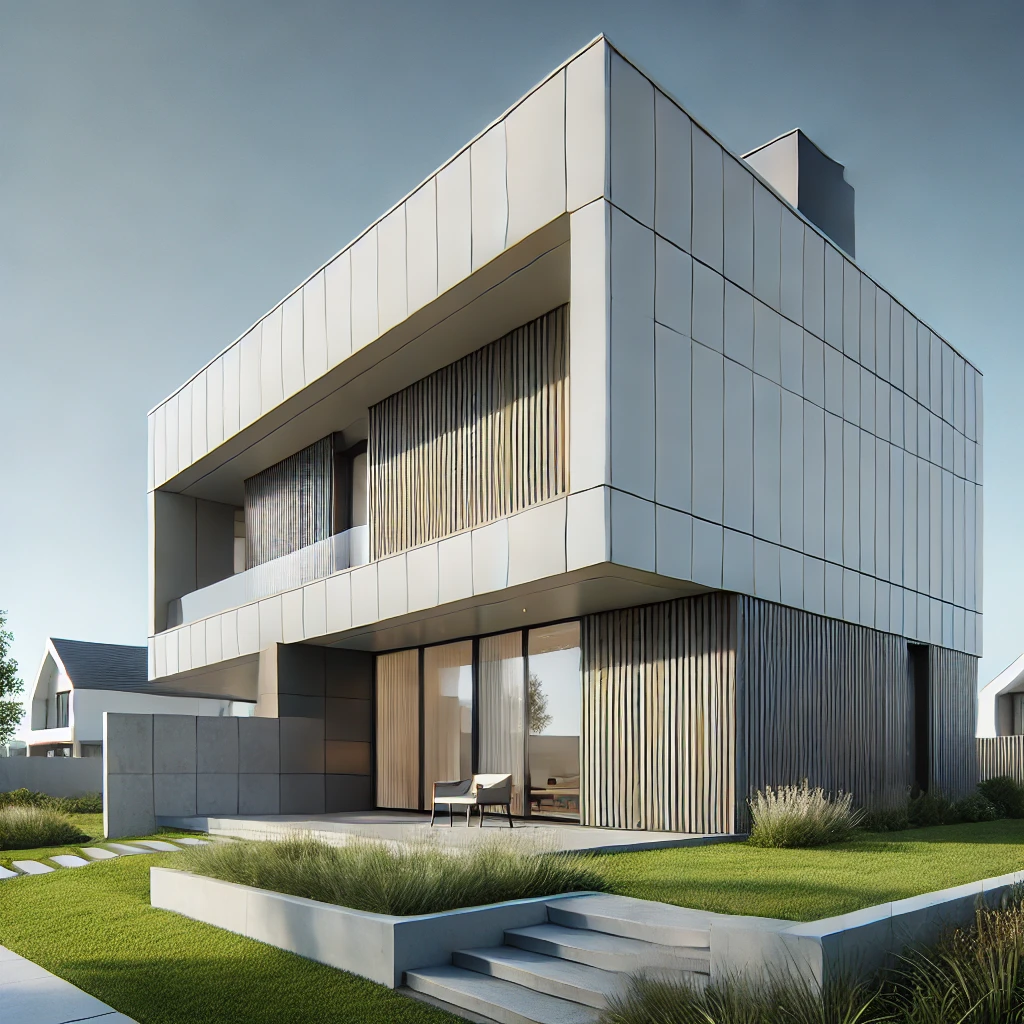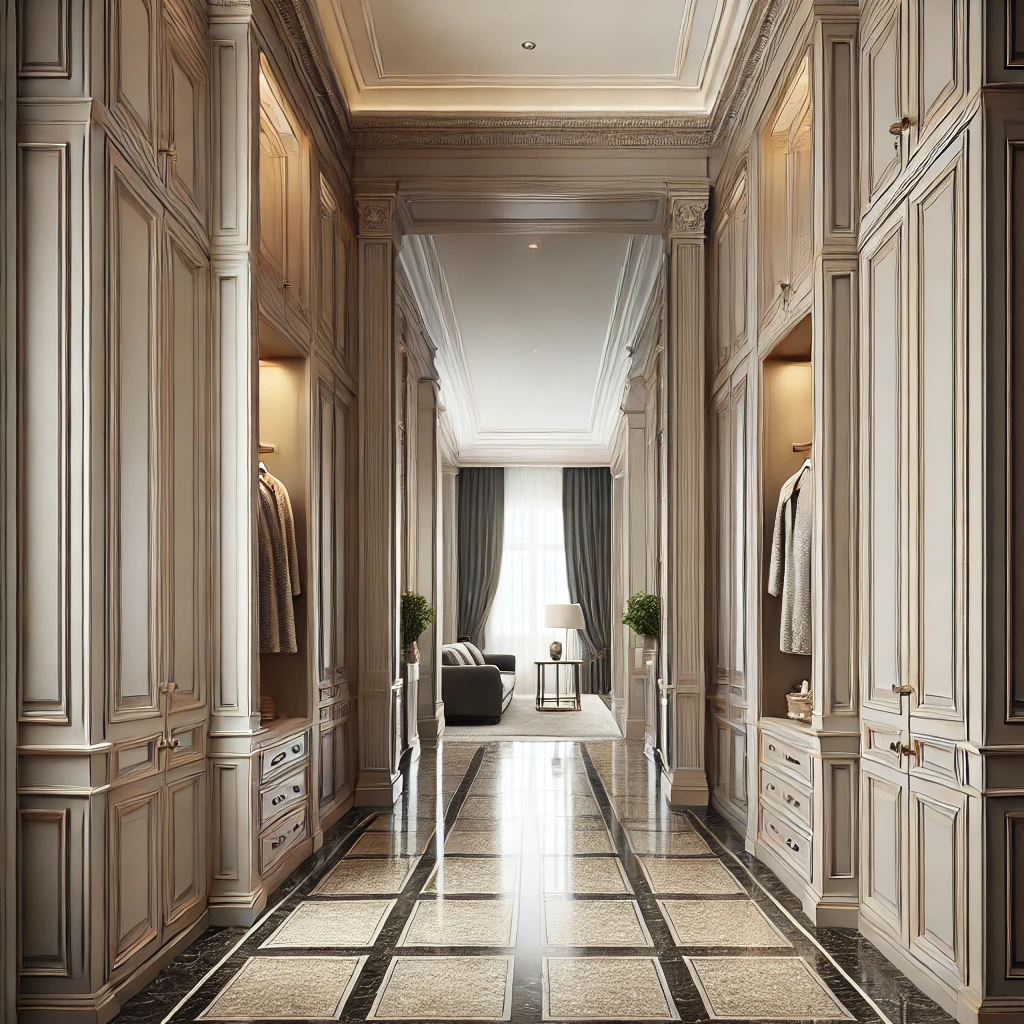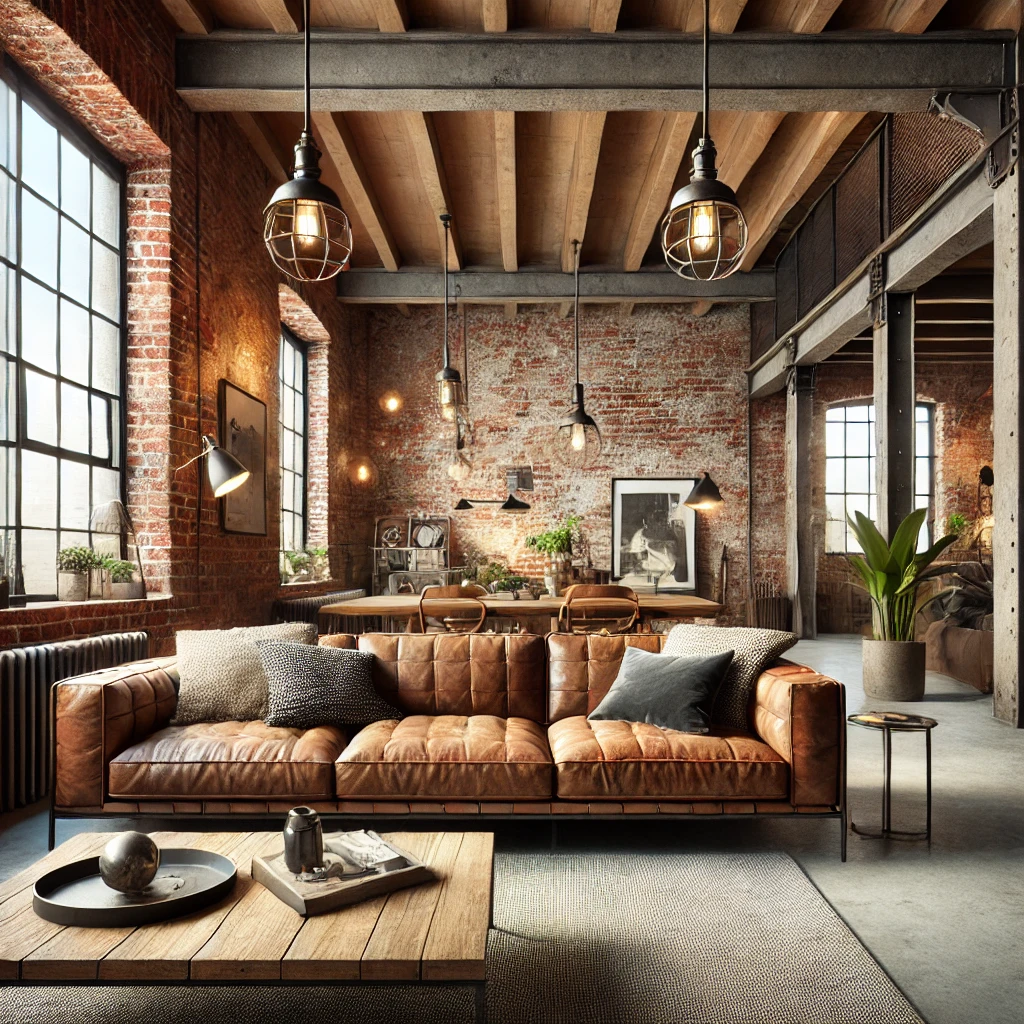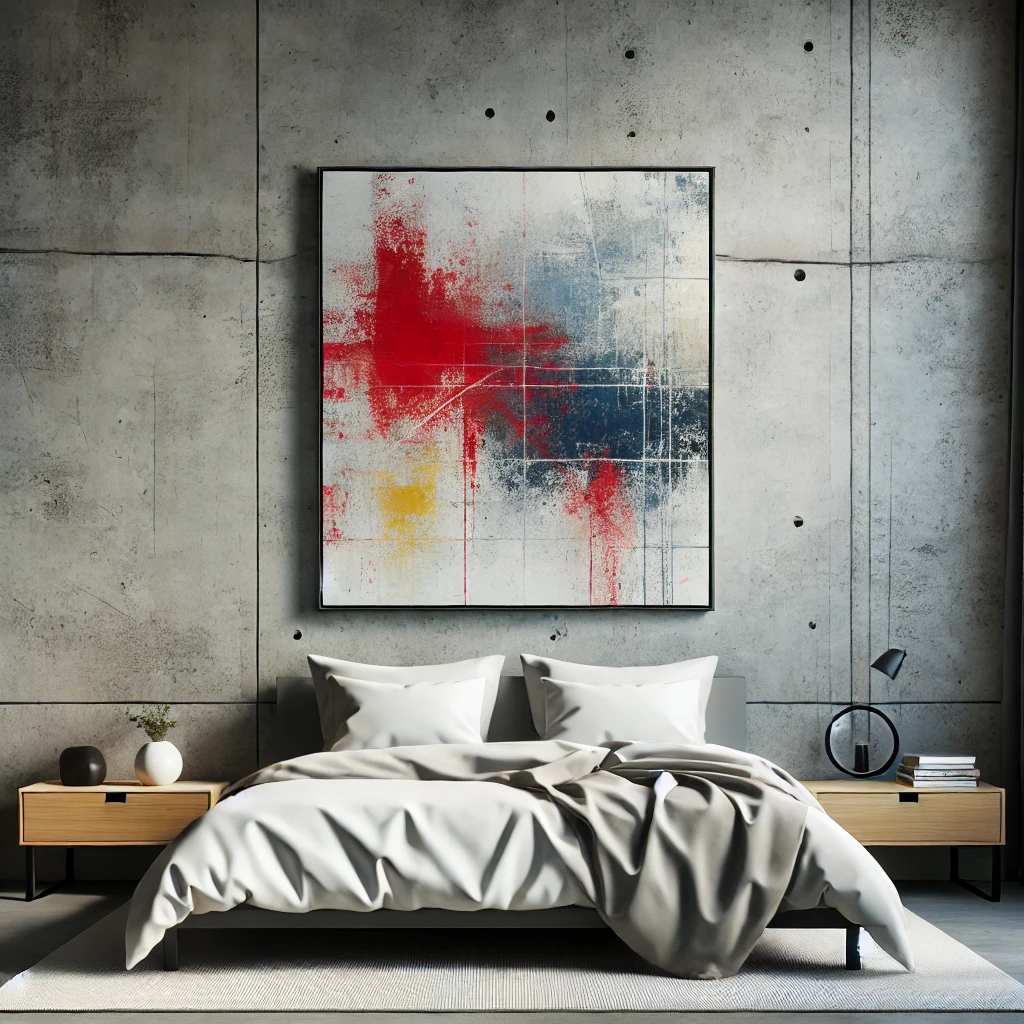Design Debates: When to Opt for a Colored Ceiling
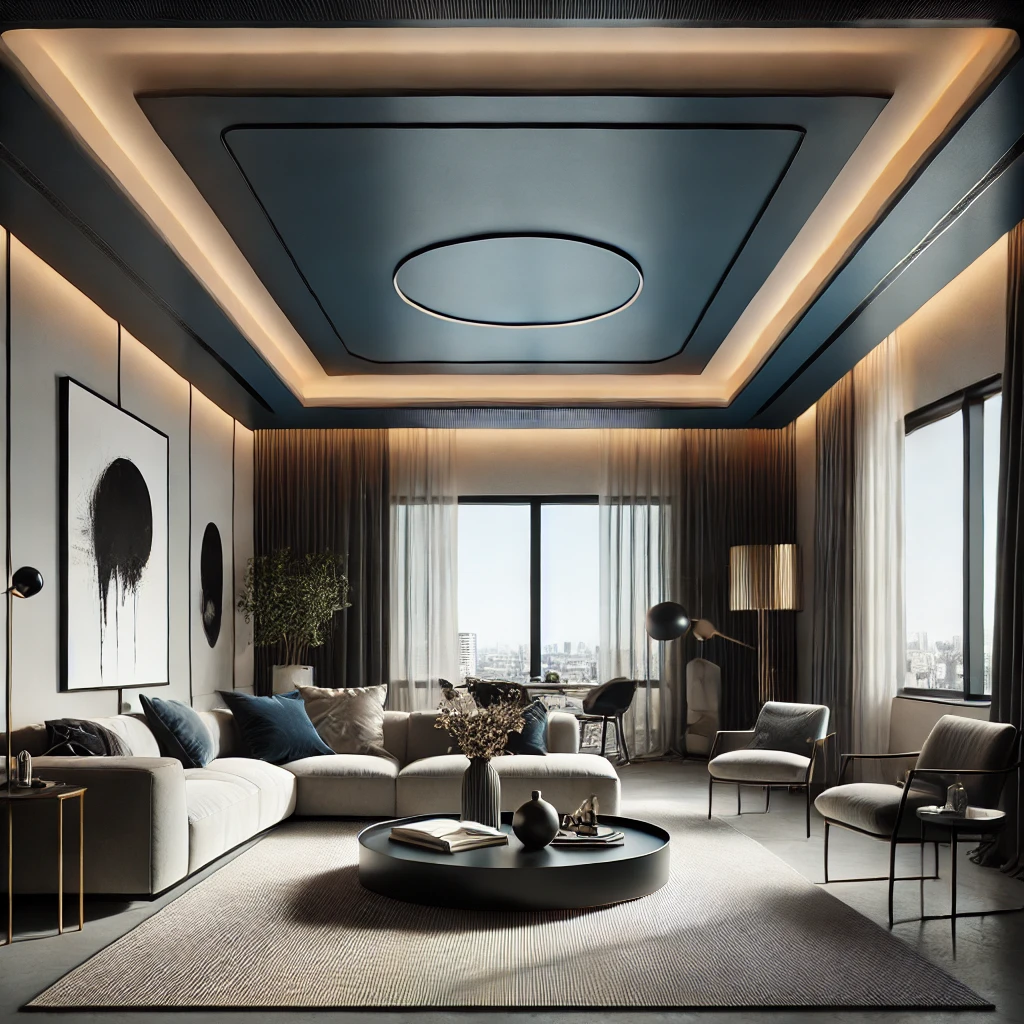
When asked about colored ceilings, nearly 400 surveyed designers unanimously responded: “It depends on the concept.” This answer led to further exploration: what kind of concept calls for a colored ceiling, and when is it better to leave it white? And if a colored ceiling is required, what color should it be? How intense should it be? Should it be patterned or solid? Let’s dive into these questions and more.
No Hard and Fast Rules
There are no interior spaces where the ceiling must be white, nor are there spaces where it must be colored. A colored ceiling is simply a design choice, and whether or not to use it depends on the situation. It’s a tool in the designer’s kit, to be applied thoughtfully based on the overall concept of the room.

A Combination of Factors
The decision to opt for a colored ceiling often involves a bold client and a conceptually designed interior. Let’s explore a few scenarios where colored ceilings can make a significant impact.
Scenario #1: When You Want to Impress
Here are situations where a colored ceiling might be used to create a wow factor:
- Rental Properties: Attract tenants with an unconventional interior.
- Vacation Homes: Experiment with design choices you might not dare to try in your primary residence.
- TV Renovation Shows: Design with an eye toward ratings and viewer engagement.
- Guesthouses and Saunas: Create memorable spaces for visitors.
Let’s see how this works in practice with a few examples.
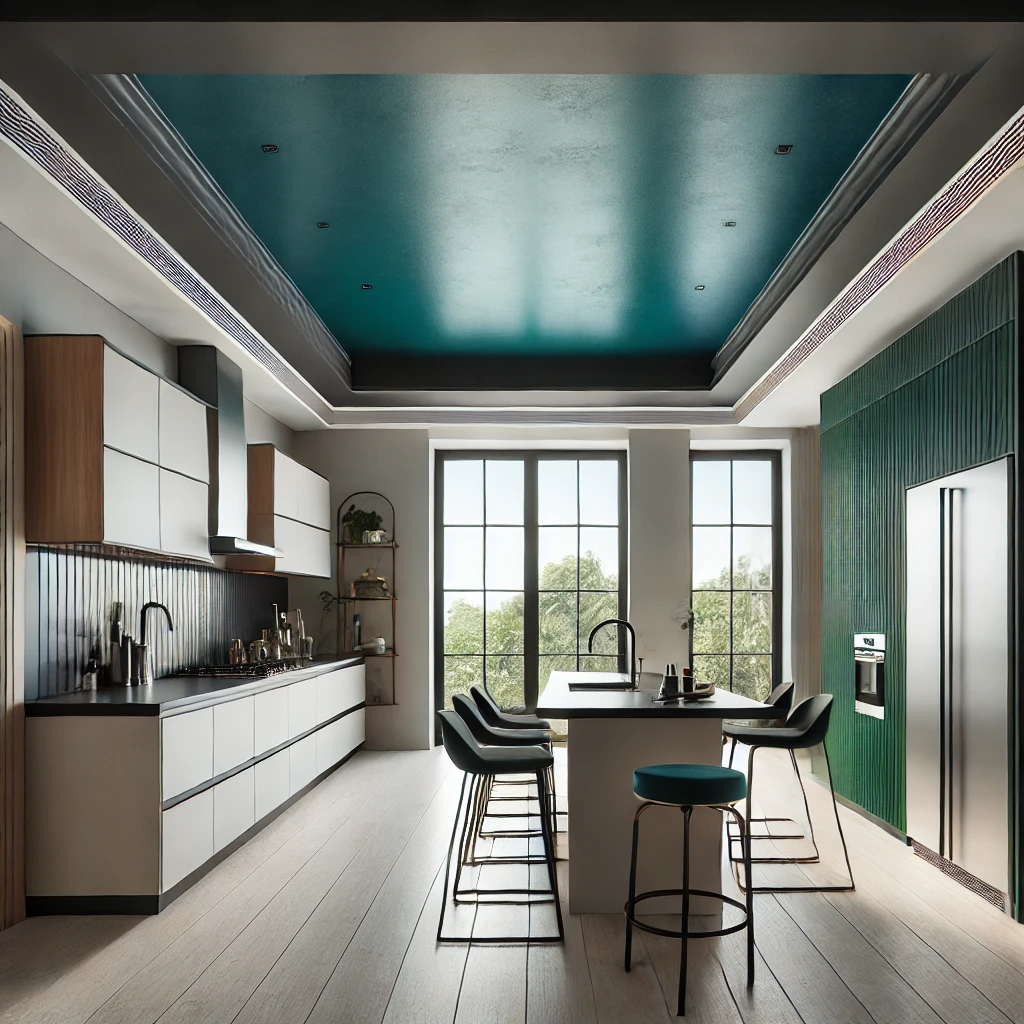
Ensure the Ceiling is Easy to Repaint
You might do everything right, and the result still might not appeal to you—that’s okay. Colored ceilings in residential interiors are unconventional, and they don’t suit everyone. Sometimes, you have to try it to know if it works for you.
Check the Ceiling Structure
Remember the internet meme about the dress that appeared to be different colors to different people? The same applies to ceilings: some find that multi-level constructions with steps and dark or colored centers visually increase height, while others feel that such solutions make the ceiling seem lower.
Choosing the Right Shade
Black and dark gray are the most popular colors after white. However, it’s best to use visualization tools to “repaint” ceilings on a computer first to see how it might look.
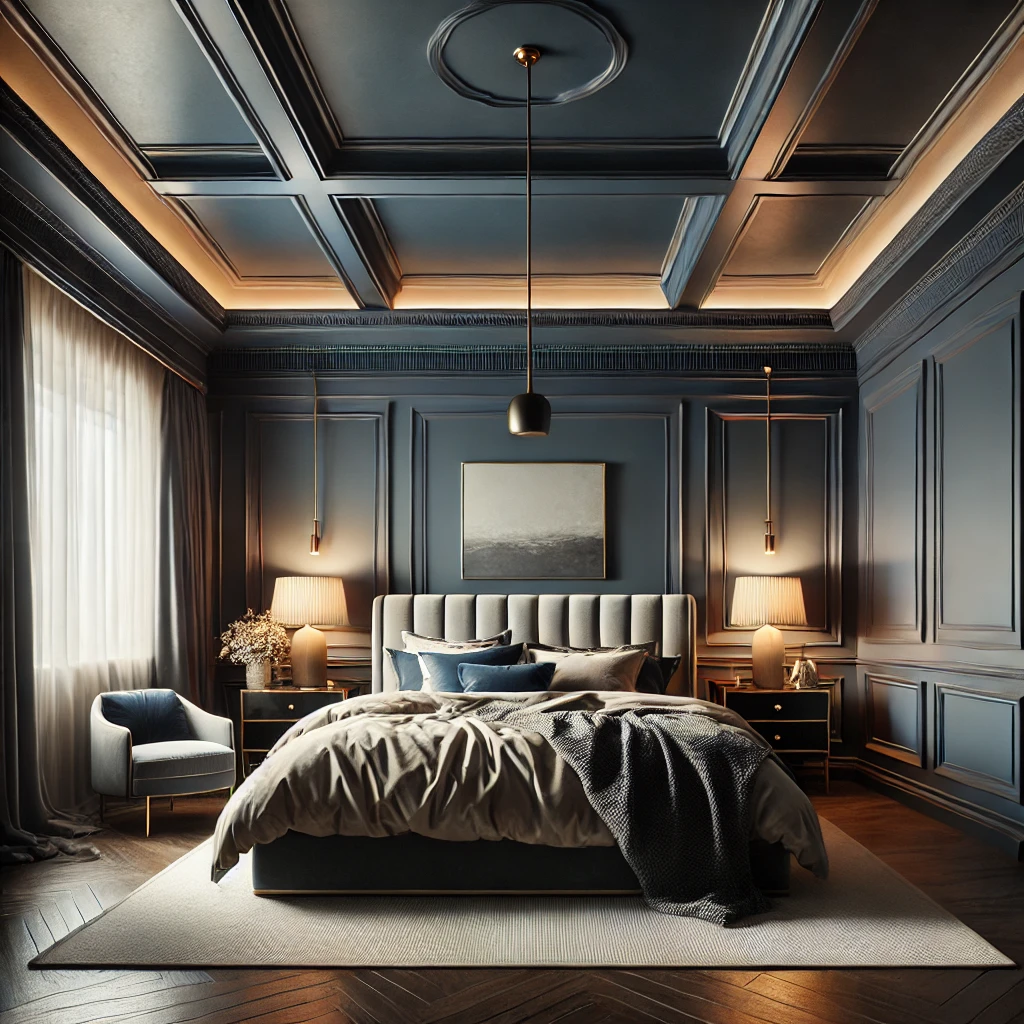
Warm or Cool Colors?
The choice depends on the size of the room and its purpose:
- Warm, Bright Colors: These are best suited for high, spacious, or public areas. A bright or darker ceiling can help visually “gather” a large space, making it feel more cozy and intimate.
- Cool Colors: Cool tones, regardless of intensity, tend to add height. Warm tones are better when kept pale, as they can make a room feel more compact and cozy.
In large rooms with high ceilings, a brighter or darker ceiling (relative to the walls) can help balance the space and reduce the feeling of an overly large, potentially uncomfortable area.
Correcting Geometry with Color
In rooms with complex ceiling geometries or sloped ceilings, a colored ceiling can help visually correct the space. Painting adjacent walls or several nearby walls in the same color as the ceiling can also enhance this effect.
This approach is particularly useful in old panel houses or skyscrapers with panoramic windows where the actual ceiling height may feel oppressively low. The solution is to paint the walls and ceiling in the same color, creating a more cohesive and less boxed-in appearance.
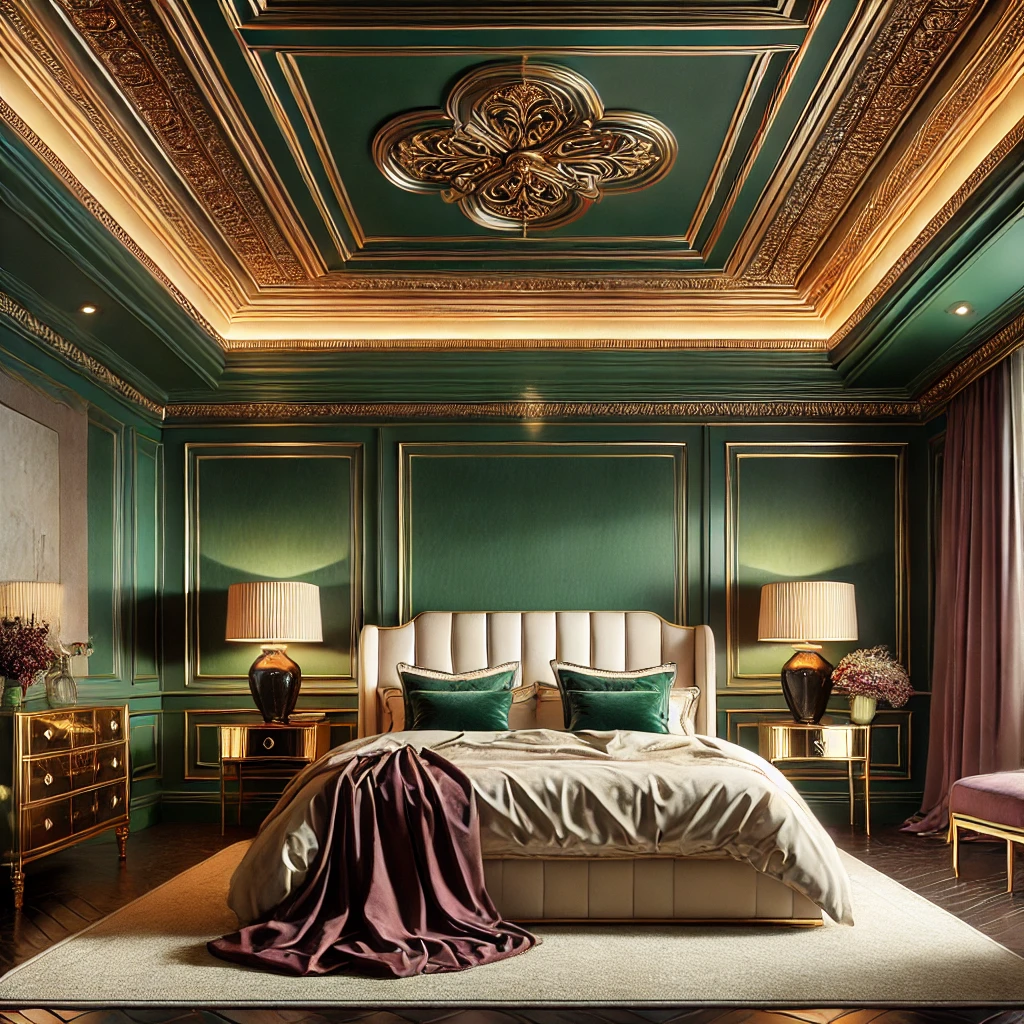
Color Intensity
The color doesn’t have to be intense. For instance, in some designs, you may hardly notice that the walls and ceiling are painted in a very subtle shade of gray—yet, the effect is there, creating a sophisticated and cohesive look.
Conclusion
Whether or not to opt for a colored ceiling ultimately depends on your design goals, the space’s purpose, and the client’s preferences. When used thoughtfully, a colored ceiling can transform a room, adding depth, character, and a unique visual appeal.
Ready to explore the possibilities of colored ceilings? Consult with a professional to ensure the perfect application and design that suits your vision.
Scenario #2: Creating a Focal Point
A colored ceiling can serve as a striking focal point in a room, drawing the eye upward and adding an unexpected element of design. Here’s when it works best:
- Small Spaces: In compact rooms, a bold ceiling color can add interest without overwhelming the space. For example, a deep blue ceiling in a small bathroom can create a dramatic, jewel-box effect.
- Dining Rooms: A richly colored ceiling above a dining table can create an intimate atmosphere, making the space feel more inviting and cozy during meals.
- Entryways: First impressions matter. A brightly colored ceiling in an entryway can set the tone for the rest of the home, giving guests a taste of what’s to come.
In these cases, the ceiling color becomes a conversation starter and an integral part of the room’s design narrative.
Scenario #3: Enhancing Architectural Features
If your room has unique architectural features, a colored ceiling can enhance these elements and make them stand out. For example:
- Tray Ceilings: Highlight the recessed area of a tray ceiling with a contrasting color to draw attention to its depth and detail.
- Beams: Exposed beams painted in a rich color can add warmth and character to a space, especially in rustic or industrial interiors.
- Vaulted Ceilings: A darker ceiling color can help balance the height of a vaulted ceiling, making the room feel more grounded and cozy.
Using color in this way not only enhances the architectural features but also adds dimension and interest to the overall space.
Scenario #4: Playing with Light and Mood
Color can dramatically affect the mood of a room, and the ceiling is a powerful canvas for this effect. Consider the following:
- Warm Colors: A warm-toned ceiling, such as terracotta or soft gold, can create a cozy and inviting atmosphere, perfect for living rooms or bedrooms.
- Cool Colors: Cool tones like pale blue or lavender can make a space feel calm and serene, ideal for bathrooms or meditation rooms.
- Dark Colors: Dark ceilings, such as charcoal or navy, can create a sense of intimacy and drama, particularly in larger rooms or spaces meant for relaxation, like a home theater.
The choice of color and its intensity can transform the way a room feels, making it more suited to its intended use.
Practical Tips for Painting Ceilings
If you decide to paint your ceiling, here are a few practical tips to ensure the best results:
- Prep the Surface: Like walls, ceilings need to be prepped before painting. Fill in any cracks or holes, sand the surface, and apply a primer to ensure even coverage and adhesion.
- Use the Right Tools: A roller with an extension pole is essential for painting ceilings. For textured ceilings, consider using a roller designed for rough surfaces to ensure even application.
- Test the Color: Before committing to a color, test it in a small area of the ceiling to see how it looks in different lighting throughout the day.
- Start with a Light Color: If you’re unsure about a bold choice, start with a lighter shade. You can always go darker later if you feel more adventurous.
Final Thoughts: Should You Go for a Colored Ceiling?
A colored ceiling can be a bold and transformative choice in interior design. While it’s not for everyone, when done right, it can add depth, character, and a unique touch to any room. Whether you’re looking to make a statement, highlight architectural features, or simply experiment with color, a painted ceiling offers endless possibilities.
Remember, the key to a successful colored ceiling is balance. Ensure that the rest of the room’s design elements complement the ceiling color, creating a cohesive and harmonious space. And don’t forget to test your ideas with visualizations or samples before committing to a final look.
Ready to Transform Your Space?
If you’re considering a colored ceiling but aren’t sure where to start, consulting with a professional designer can help you make the right choice. They can guide you through the process, from selecting the perfect shade to ensuring flawless application. Don’t hesitate to reach out and bring your design vision to life!

 German
German Slovak
Slovak Romanian
Romanian Lithuanian
Lithuanian Latvian
Latvian Hungarian
Hungarian French
French Finnish
Finnish Dutch
Dutch Czech
Czech



